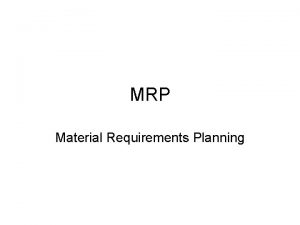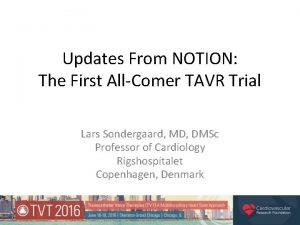RU LESS Updates 01112016 1 RU LESS Report




- Slides: 4

RU LESS Updates 01/11/2016 1

RU LESS Report; What we have done, What we are working on Completed In progress • Evaluation criteria (Financial and economics, resiliency, site characteristics, technical feasibility) definition and contents – – – RU LESS prepared initial drafts for each criteria containing the factors and their levels. RU LESS received feedback from BPU and stakeholders in order to fine-tune criteria contents through RU LESS chatroom RU LESS modified and wrapped up contents of each criteria according to current feedback • Mathematical modeling for financial and economics evaluation – – Daily economic dispatch model. This is an optimization framework (maximizing daily revenues), with respect to renewable availability, renewable and ES technical operation specifics, and charges (energy and demand). Sustained and temporary outage events simulation based on distribution of occurrence and duration Commercial and Industrial (C&I) electricity tariffs time-series for both PSEG and JCP&L. Selected utilities are according to BPU and stakeholders comments during RU LESS workshop on 12/01/15 Frequency regulation modeling • Design of experiment (case studies) – – RU LESS initial draft was prepared and sent to BPU and stakeholders containing core cases and sensitivities. BPU suggested addition of customer segments to existing RU LESS list (BPU suggestions: municipal/state police facilities, waste water treatment plants, municipal government facilities, senior citizen housing, multifamily housing, commercial facilities, industrial facilities) 2

RU LESS Report; What we need • Design of experiment (case studies) As mentioned in the previous slide, BPU suggested addition of customer segments to existing RU LESS list (BPU suggestions: municipal/state police facilities, waste water treatment plants, municipal government facilities, senior citizen housing, multifamily housing, commercial facilities, industrial facilities) What we need : ü Clear definition for these customer segments. As an example, we need to know exactly what will be included in the list of commercial and industrial facilities ü Electricity load data (in form of time-series) for aforementioned customer segments. This is a top priority for our analysis. ü Definition of critical load for aforementioned customer segments. This could be either a function of normal load (Simple example: Critical load (t) = α. Normal load (t)) or actual time-series of critical load. This is a crucial piece of information in terms of resiliency/reliability analysis (outage occurrence). ü Locations under the study. Location is one of the three main parameters in our core cases along with customer segment and load level. It is necessary for us to include list of sample locations in our analysis. This will reveal information such as weather, elevation and utility. 3

• Contact information: Farbod Farzan, Email: farbod@scarletmail. rutgers. edu 4







